
 |
BUSINESS |
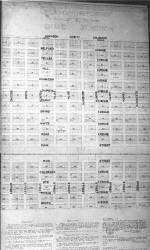 |
1880s
On Sept. 26, 1881
the Grand Junction town site was selected, and stockholders then established
the Grand Junction Town and Improvement Company. They owned the land, and
were distinct from the town government. They surveyed streets and lots, promoted
sales of the land they owned, and encouraged settlement. The town
occupied a square mile, spanning from 1st to 12th Streets, and
from North to South Avenues. The plat shows the layout of the town. Click for larger image and downloadable PDF versions of full-size plat map. |
|
|
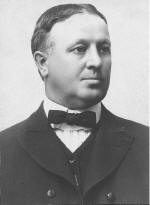 |
1890s
The first newspaper in town was the
Grand Junction News, with a first edition October 28, l882. Edwin Price
was the editor and publisher. Other papers came and went. In 1893, Isaac
Newton Bunting (pictured) and Howard Lee established the Daily Sentinel, which is
still published. Its first edition was November 30, 1893. |
|
|
 |
1900s Frank Dean was
a photographer in the booming silver mining towns of Western Colorado, and
also in Grand Junction. By 1900 he moved here permanently and began a forty
year career of photographing people, events, buildings and landscapes. His
excellent photos are a valuable recording of the area�s history. |
|
|
|
|
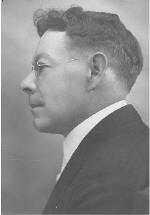 |
1920s Olney E. �Ollie� Bannister was a patriarch of the family who operated Bannister Furniture Company from 1897 to 1999. Bannister also was active in politics, and was in the Colorado State Senate from 1918 to 1934. Among the causes he championed was the legislation which established Mesa College in 1925. |
|
|
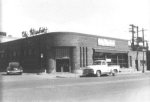 |
1930s The City Market chain was started by the Prinster brothers with one small grocery store in Grand Junction in the 1920s. Grocery stores typically were not large. Supermarkets with wide selections and lower prices were an idea of the l930s. City Market opened the first of their many supermarkets at 4th and Rood in 1939. (City Market Photo) |
|
|
|
|
 |
1950s Wholesale firms in Grand Junction supplied businesses in Western Colorado and Eastern Utah. In Colorado, the wholesale businesses in Grand Junction were second only to Denver. The wholesalers flourished, especially in the booming 1950s. Biggs-Kurtz Hardware dealt in all lines of light and heavy hardware. The Independent Lumber Company had 19 lumber yards regionally, and was both wholesale and retail. The C. D. Smith Drug Co. had both drug and chemical divisions. Other wholesalers provided groceries, paper, dairy products and petroleum, to name a few. (Midwest Photo) |
|
|
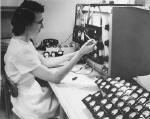 |
1960s New technological developments in electronics spurred its manufacturing. Electronic manufacturing plants began to open in Grand Junction to take advantage of the available labor force. Dixson, Ultronix, and Hickok were some of the manufacturers. Lower labor and distribution costs elsewhere lead most of them to move away in later decades. (Bruce Dixson Photo) |
|
|
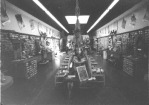 |
1970s To meet new business circumstances, the Downtown Development Authority was initiated by Grand Junction business owners in 1977. West of town, a mall began in the late 1970s and it has grown into a regional shopping center. Typically, malls deplete old downtown areas. The DDA has kept the Main Street Shopping District viable and thriving. Benge�s Shoe Store has been on Main Street since 1911, and is a DDA member. (Benge's Shoe Store Photo) |
|
|
 |
1980s Mountains with layers of shale stone stretch from Colorado into Utah, and cross northern Mesa County. The shale has vast petroleum deposits imbedded, and in the late 1970s and early 1980s, billion dollar facilities were being built in adjacent Garfield County for shale oil extraction. Grand Junction boomed as a regional oil headquarters. A sudden drop in oil prices halted this, starting May 2, l982. Boom turned to bust, and the economy of this city and the whole area suffered. (Adam Reeves Photo) |
|
|
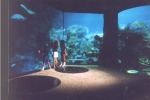 |
1990s A local business with customers near and far is Reynolds Polymer Technology, Inc., which moved to Grand Junction in 1993. Reynold�s huge sheets of clear, strong polymer are supplied to major aquariums worldwide, including Denver, Chicago, and London. Reynolds is an example of the many businesses which are part of Grand Junction�s rebounding economy. (Scott Dressel-Martin, Reynolds Polymer) |
|
|
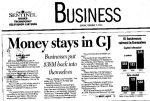 |
2000 & Beyond The national economy surged ahead in the 1990s, and Colorado was among the leading states in growth. A survey in 2,000 saw that of the twenty American cities with the strongest economies, Colorado had six. Grand Junction was #12 nationwide of these stellar performers. The city developed a wide economic base, and the oil shale collapse of 1982 was far behind. (The Daily Sentinel) |
|
|
|
|
If you have
arrived at this page from a search engine |
|